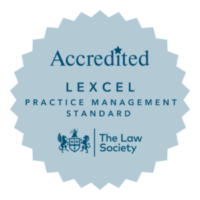Conveyancer vs DIY Conveyancing – “Why do I need to instruct a Conveyancer for my house purchase/sale? Can’t I Do It Myself?”
15th Mar 2024
Sometimes we are asked whether it is necessary to instruct a Conveyancer solicitor or whether it is possible for someone to deal with their conveyancing transaction themselves.
Before making a decision as to whether to instruct a Conveyancer or ‘DIY’ it is very important to consider the following:-
- Key tasks and risks in the conveyancing process that include:-
- confirming that the seller actually owns the property;
- confirming specific details about the property;
- preparing and checking the legal contract of sale and checking the legal title (which could involve checking the lease if the property is a leasehold property)
- handling the money involved (and ensuring no property fraud is taking place);
- exchanging contracts;
- legally completing the sale;
- paying any taxes due; and
- registering the transaction properly with HM Land Registry.
The risk of DIY Conveyancing
There are various searches to be carried out and formal enquiries to be carried out before a transaction can proceed safely. If these searches aren’t done properly or appropriate enquiries are not raised then huge problems can arise after a transaction has completed. You may have problems registering the property at H M Land Registry if things haven’t been dealt with properly.
In addition, depending on the type of transaction you are undertaking there will be a number of financial and legal aspects which will need to be covered in the legal documents which won’t be covered in the standard forms.
It may take longer to do your own conveyancing as you will have to learn as you go.
It is also worth noting that you cannot do your own conveyancing if you are having any mortgage lending on a property, as most lenders will require you appoint a solicitor who will act in their interests as well as your own. The majority of lenders consider ‘DIY’ conveyancing high risk and will usually only accept a lender on their approved panel of solicitors. This is also relevant if you are selling the property, as the buyer’s solicitors will not send funds to an individual if there is a mortgage to be paid off.
Most legal transactions involving property require registration at HM Land Registry, including taking out a new mortgage or charge, transferring or gifting property or a sale or purchase, or even releasing or granting any rights and it is compulsory to verify the identity of all parties to the transaction to the Land Registry.

If you use a solicitor this is all taken care of for you and included with their fees. If you DIY then you will have to submit a special Land Registry form, certified by a solicitor, which will incur additional charges for you anyway.
In addition, DIY conveyancing involves the risk of making a mistake which may be difficult and expensive to correct.
If you make a mistake in DIY conveyancing you may have to pay a lawyer much more than the cost of the conveyancing to correct the error!
So, eliminating the services of a conveyancer should not be considered as a means of cutting costs and saving money as there are other, less risky ways of doing this.
Ready to start your conveyancing journey?
Speak to one of our friendly and understanding new instructions team for a quote and free initial advice regarding your conveyancing need. In a hurry? Why not try our free instant online quote calculator.
CLICK HERE FOR A FREE INSTANT QUOTE
Want to find out more first?
We have a wealth of information about the conveyancing process whether you are a seasoned pro or taking your first step onto the housing ladder. The best place to start would be at our Residential Conveyancing pages, which can be found here:-
TAKE ME TO YOUR RESIDENTIAL CONVEYACING PAGES
Alternatively, contact us via our website, email or telephone. All of our details can he found here.
Related news
Articles you may find useful
Like this article? Sign up for our regular newsletters






